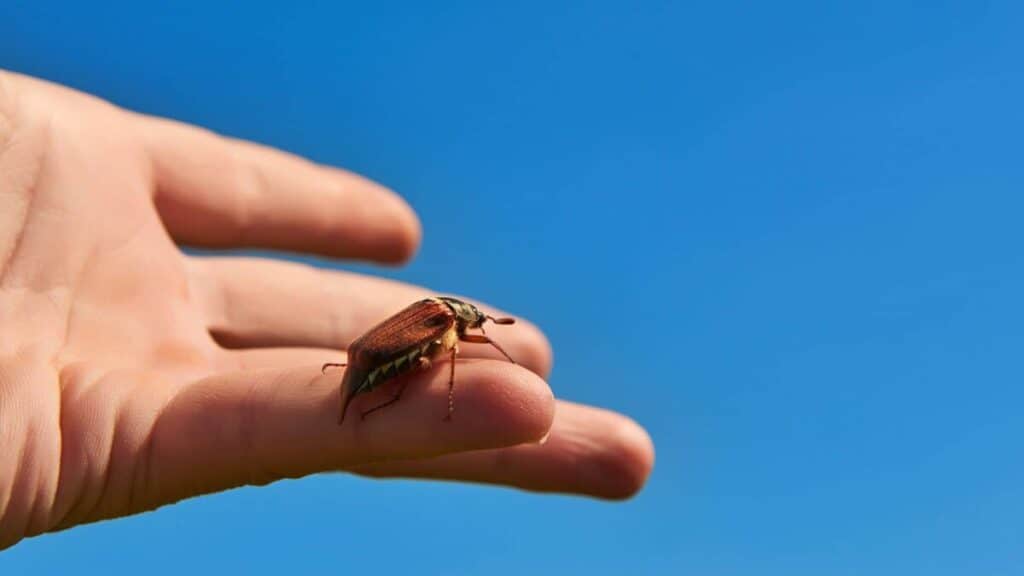
Pest control subscription services could provide regular – usually quarterly – preventative and defensive services against some of life’s most annoying home pests.
It may be a good option for those who are prone to infestations and have exhausted all do-it-yourself (DIY) options, especially if the house was treated professionally in the past but the pests have returned.
For those with minor pest problems or who want to take preventative measures, a standard pest control one-and-done service may be enough.
To make the best decision, we’ll cover:
- What pest control subscriptions include
- Why you should sign up for one
- Its pros
- Who shouldn’t sign up for one
- Its cons
- Pest control subscription alternatives
- And more…
What Does a Pest Control Subscription Include?
Pest control subscriptions usually sell comprehensive and repeating treatment for the most well-known household pests such as cockroaches, bed bugs, ants, centipedes, crickets, silverfish, rats, mice, and termites.

Just like your TV entertainment subscriptions, a pest control subscription service includes pest control every X number of weeks or months – usually every 3 months or so – over a set duration. These contracts could be over a few months, a year, or even multiple years.
Depending on your needs, the type of pest control included in the subscription will vary.
Fumigation
Fumigation is one of the most well-known pest control methods, especially for termites and roaches since this method reaches the small cracks and spaces other methods can’t reach. This method tends to use pesticides and rodenticides for large-scale infestations.
The fumes also affect all life stages of the pest, eliminating them from egg to adult and clearing up the space in less time. This method is used often for larger spaces and commercial areas.

Electronic Pest Control
Modernization has improved pest control so that ultrasonic and electronic technologies get the job done for you.
These are an attractive alternative as they are usually easy to apply, don’t require the owner to leave the premises, and don’t disturb living conditions. It is also environmentally friendly and energy efficient.
Not all pest control services offer this as a subscription, but if you’re interested in skipping the chemicals, it is an option worth exploring.
Traps and Baits
Traps and baits tend to work best for small animals like rodents, but they can also be used for insects.

Spot Treatment
Spot treatments are when pest professionals drill holes in beams or floorboards to insert termiticide. This is cheaper than fumigation and can prevent re-infestations, but takes longer to complete.
Heat Treatment
Heat treatment and temperature control methods use extreme temperatures to control pests. High temperatures are good to target bedbug adults, eggs, and larvae. Cold temperatures can also be used to eliminate insect growth.
Why Sign Up for Pest Control Subscription Services?
If you’re tired of seeing the same pest show up in your home or have exhausted the DIY options to no avail, a pest control subscription may be just what the doctor ordered.
By working with diligent professionals, you’ll be able to tackle your pest problems and go on the protective offensive instead of the defensive, plus you’ll have the top equipment to help eradicate that pesky nuisance and all its friends.

Offense Instead of Defense
The majority of pest control calls are made once the pests have already made a home within your walls, floors, or cabinets.
While there’s nothing wrong with going on the defense when your home is invaded, it’s much easier to prepare an offense to prevent the invasion in the first place.
By subscribing for pest control, you’re being proactive against both the present pests and any surrounding ones that may be eyeing your home for an upcoming vacation.
Advanced Equipment
Pest control companies have access to the most modern and tested equipment to target pests in their most evasive hiding spots.
As many DIY attempts as you may try, you’ll never have the professional equipment that comes with a pest control subscription service.
If you’re someone who doesn’t want to deal with dead pest cleanup or chemicals that could harm children and pets, professional pest companies could also offer alternatives that you won’t find in-store.

The Pros of a Subscription Service
In addition to protecting your home against higher costs and damage from pests, a subscription for pest control could also help you know what you’ll pay upfront, avoid DIY mishaps, and save you time.
You Know What You’ll Pay
Some of the best parts of subscriptions is knowing what you’re going to pay every month or quarter without fail.
It’s one of the reasons people pay for Amazon Prime or Netflix – you know the service you’ll get and how much you’ll get charged, no matter how many things you order or movies you watch.
In your case, you’ll know your total bill amount no matter how many pests are lingering on your property.
Avoid DIY Mishaps

Unfortunately, sometimes our well-intended DIY projects end up causing more harm than good. With pest control methods, it’s easy to mess up chemical applications, choose and inefficient pesticide, or end up with half the pests dead and the other half escaping to a new part of your home.
Saves You Time
Professionals will be in and done in less time that it takes you to choose the right DIY method on Google.
Who Shouldn’t Sign Up for Pest Control Subscription Services?
Pest control subscription services are not for everyone – after all, you may not even have a pest problem to begin with!
Just because you see a cockroach on your porch doesn’t necessarily mean you have a problem, so it’s important to see if the cost-benefit balance of a subscription service is right for you.
Subscription services for pests are not for those with a minor pest problem or for companies with no track record or online reviews.
Those with a Minor Pest Problem

If you found a centipede near your entryway, squashed it, and threw it away, you cannot assume you have a centipede infestation or a pest problem.
Subscription services – and professional pest services in general – are best for either preventative measures or for those who are prone to true infestations.
Pest problems could involve infestations of a large number of pests or noticeable damage from pests within your residence.
If nothing seems amiss and no other pests appear after the first one, you can likely avoid a subscription service for pest control.
Those Who Can’t Vouch for the Pest Company

Unfortunately, if you receive an ad for a pest subscription deal that seems too good to be true, it probably is.
Unless it is some sort of holiday special or the company is just spreading its wings, subscription services tend to have a heavier price tag.
Anything too low and you may be dealing with an inexperienced company, or worse – scam artists.
Always ensure that you can vouch for the pest control company through things like an online business rating through Trustpilot, Google review from real customers, testimonials on their website, and a professional online presence.
The Cons of a Subscription Service
As with any subscription, where there’s a pro there’s a con. Here are two cons you can’t avoid around pest control subscription services.
It’s Expensive

While you may know what you’re signing up for from the get-go, these subscription prices could likely run you between $400 and $1,000 per year for general pest control.
If you’re looking for more of a targeted strategy or want to use a specific form of pest control – like ultrasonic – you could be facing a higher price point.
If money is a concern, consider having a one-and-done professional visit by the company and calling them again when you truly see the need to. Also, ask for estimates before any service is agreed upon.
Your Infestation May Not Return
If you experience a pest infestation once in your life, it’s understandable that you’ll want to avoid a second one at all costs.
Some people are more prone to infestations due to their location, the structure of their home, or even their lifestyle, but most of us can eliminate an infestation and take preventative measures to ensure a second infestation doesn’t occur.
While a subscription may help with prevention, you may not need it as often as the service offers.
Alternatives to Pest Control Subscription Services
DIY methods are never as effective as professional services, but if you have a very small pest problem, you may be able to solve it using one of these homemade or store-bought methods:
- Eliminate pest food sources and homes by keeping things clean, trimming your landscaping, eliminating water in your yard, and sealing small holes in doors and windows that serve as entry points
- Be sure to choose the right pesticide and follow the manufacturer’s instructions
- Consider bait traps for larger animals like rodents
- If you see more than a couple pests, turn to professional services. Killing a few won’t do you much good if there’s an infestation hiding in the walls.
Conclusion
At the end of the day, pest control subscription services are best for those in specific situations. If your home is prone to infestations, you’ll likely save money, time, and headaches by contracting a subscription service.
On the other hand, those with minor pest issues or who seek preventative measures will likely be OK with just a one-time service contract. Consider pricing and the reputability of your local pest company before deciding to make sure you choose the option that’s best for you.
Alright, that’s it for this article, here are a few hand-selected articles that you might also find interesting reads:
Pest Control or Exterminator: Seven Key Things You Need to Know Before ChoosingIs Pest Control Necessary? My Experience and Conclusion
Is Pest Control Worth It – Pros and Cons With Real Examples
Recent Posts
Tiny Black Bugs in Bathroom NO WINGS: What They Are and What to Do!
Finding tiny black bugs in your bathroom can be uncomfortable, to say the least. Especially if they are persistent, or they appear in very large numbers, which they often like to do. When it...
Tiny Black Bugs in Plant Soil - What Are They & What To Do About It
A short horror story: You get a new houseplant. You do your best to take care of it. You’ve ensured that it has the right soil, the right amount of sun, it gets enough water. And then one day, you...

